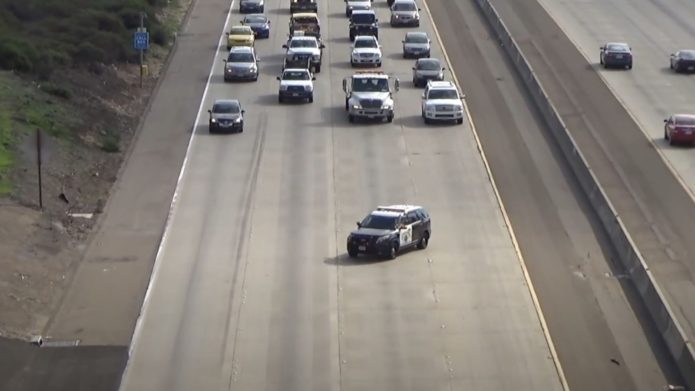Imagine that you’re driving down your local highway (at the posted speed limit, of course) when you suddenly see a law enforcement vehicle ahead with its lights on, weaving back and forth in a serpentine zigzagging motion across all the lanes. In most cases, they’re likely slowing down and may even come to a complete stop. No, they almost certainly aren’t drunk, nor are they on a power trip.
****
This strategic technique is known as a traffic break. However, depending on your state, this maneuver can also be called a rolling roadblock, a slowdown, round robin, or some other local vernacular, but they all mean the same thing. The officer is attempting to slow down (or stop) the flow of highway traffic in a controlled manner because there is some kind of hazardous situation up ahead. Traffic breaks are only used when necessary and almost always in the service of driver safety.
For instance, a bad accident that obscured several lanes may have occurred, as was the case in Northern California in 2017 when a collision happened between a big rig hauling grapes and a truck towing a camper. Other scenarios may include road repairs, clearing congestion and managing traffic flow, or some unexpected debris that’s fallen onto the road, requiring a cleanup crew to move. A traffic break might also be performed if an emergency police operation occurs on the roadway, such as a high-risk car stop. Excessive rain or fog might also call for a traffic break as well.
****


